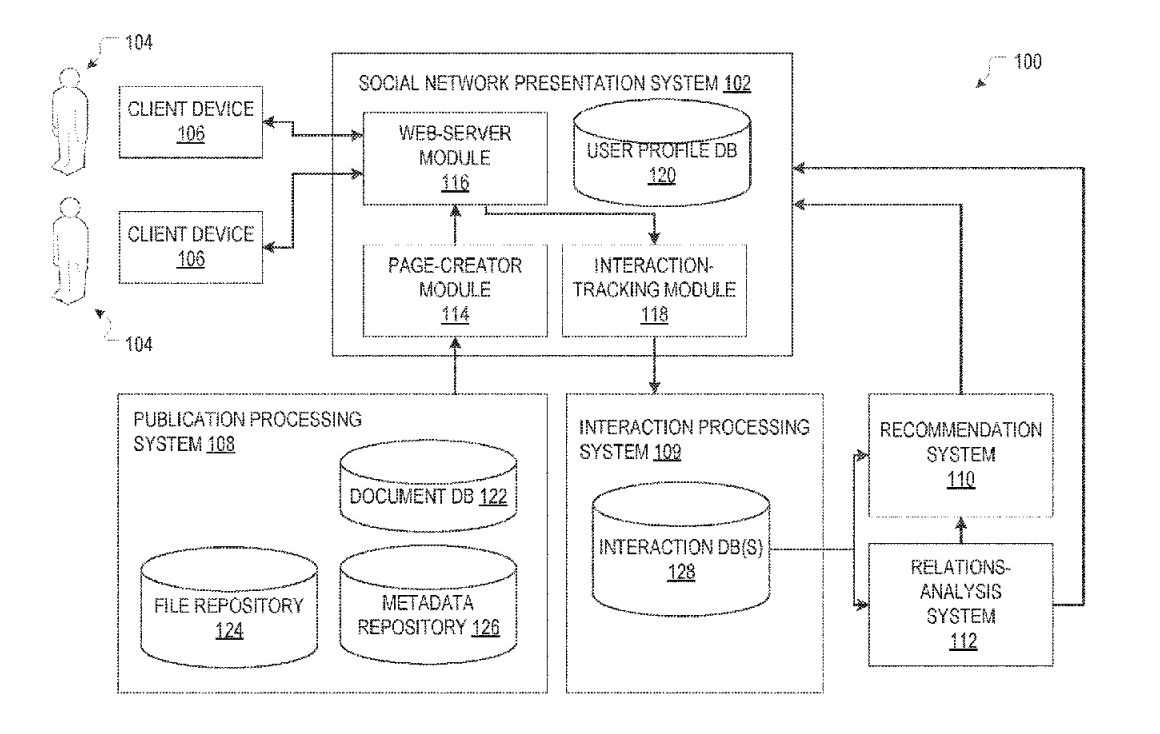ResearchGate Receives U.S. Patent For “Enhanced Online User-Interaction Tracking and Document Rendition”
ResearchGate received a U.S. Patent today (Feb. 11, 2020) for “Enhanced Online User-Interaction Tracking And Document Rendition”
From the Abstract:
Disclosed are systems and methods for enhanced tracking of user interactions with online documents, such as, in accordance with various embodiments, interaction tracking on a sub-document level of granularity and/or interaction tracking that involves storing one or more interaction parameters (e.g., an identifier of the document or of the interacting user) for each interaction.
A Bit More From Background Section of the Filing:
With the rapid increase in Internet access and usage enjoyed by the general population in recent years, much publishing activity has shifted from traditional printed media to the Internet. Advantageously, online publishing is comparatively cheap, and provides a very large potential audience with access to the published content. In addition, it facilitates estimating the size of the actual audience and assessing how the published content is received by tracking website visitors and their interactions with the content. For example, the traffic to a particular website (e.g., as measured in terms of the total number of visits or the number of unique visitors in a given time span) can easily be ascertained, providing a useful metric for the general level of interest in the site. Similarly, the reputation that a website enjoys can be measured, for instance, based on the number of links directed to that site from other websites. In a commercial context, the click-through rate for advertisements is an important metric of the advertisements’ effectiveness. For documents posted online, the number of downloads is a good indicator of a document’s popularity.
While such web-traffic and related information can be useful feedback to the author, publisher, or other interested parties (e.g., online users searching for content on particular subjects), it typically provides only a rough conclusory indicator about the overall reception of certain content, but fails to provide any direct insight into the underlying reasons for and factors contributing to the content’s popularity and reputation, leaving those up to speculation and/or experimentation through modifications to the content. Accordingly, there is room for improvements in tracking and analyzing user interactions with published content, and for acting upon collected user-interaction data.
and From the Detailed Description:
Tracking user interactions with specific document elements renders it possible, for example, to ascertain which portions within a document are the most-read, most-cited, or most-commented-on, which, in turn, provides insight into which portions are particularly interesting, influential, or controversial. Tracking interactions by document portion also allows defining more complex interaction types. For example, within a document, certain milestones capturing which percentage of the document has been read may be specified. Thus, a document-level interaction (namely, a percentage indicating which portion of the document a reader has reached) may be registered based on tracking user interactions at a sub-document level of granularity. Furthermore, sub-document-level user-interaction tracking allows defining indirect user interactions by imputing, to a given document, user interactions with document elements of other documents in which that given document is cited.
The tracked user interactions may be processed to compute (e.g., compute from scratch or update) user-interaction metrics, either in real time (using, e.g., stream-processing technologies) or at certain time intervals based on aggregated interactions, depending, e.g., on the type of interaction and the kind of metric. Further, as mentioned above, when user interactions are stored for subsequent analysis, various pieces of information may be recorded along with the type of interaction. For example, the record of an interaction may include a time stamp, facilitating, e.g., determining a history of the level of interaction with a certain document or document portion, and/or an identifier associated with the interacting user, which allows evaluating users based on how they interact with content (in addition to evaluating content based on how it is interacted with by users). In some embodiments, user interactions with a document are aggregated across subsets of the document elements to compute interaction metrics for different portions of the document at an intermediate level of granularity. For instance, if interactions are originally tracked by paragraph, they may be summed up for the different document sections.
Direct to Complete Patent Filing (HTML)
Direct to Complete Patent Filing with Images
41 pages; PDF.
Filed under: Data Files, News, Patrons and Users, Publishing
About Gary Price
Gary Price (gprice@gmail.com) is a librarian, writer, consultant, and frequent conference speaker based in the Washington D.C. metro area. He earned his MLIS degree from Wayne State University in Detroit. Price has won several awards including the SLA Innovations in Technology Award and Alumnus of the Year from the Wayne St. University Library and Information Science Program. From 2006-2009 he was Director of Online Information Services at Ask.com.



